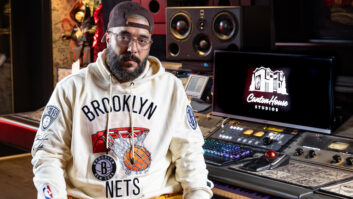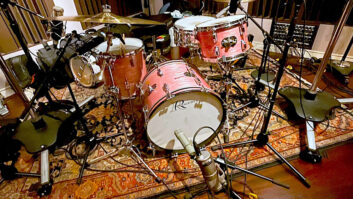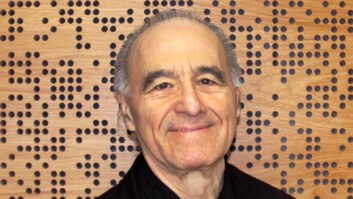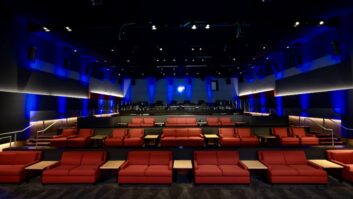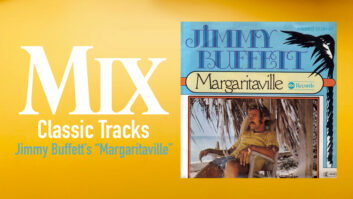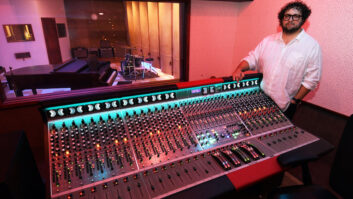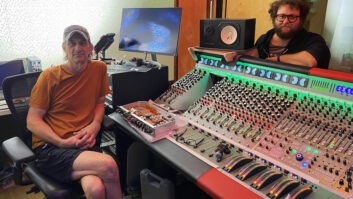Unless you just woke from a 20-year sleep, you know that digital recording and the Internet have pushed us into a multi-level world of recording. Everything you need, all the toys you’d find in a commercial studio in the last century, are now available at a fraction of the price.
But the bigs are still here, in smaller numbers since the shakeout, but large rooms and commercial studios still exist. Even in smaller markets. For example, you’d expect that Conway Studios, the 40-plus-year-old L.A. studio pictured on the cover of last month’s Mix would have a shot at figuring it out—they’ve been through the wars. But then there’s Saltmine (Mix cover, February 2016) in Mesa, Ariz., in service 28 years, and Soundscape in Chicago, a newer, thriving multi-room facility. Many more are still at it, adding to the list of studios in second-, third- and fourth-tier cities.
The truth is, whether you’re a big or small room in a big or small town, the lessons learned are similar. At the top, Capitol, Conway, the Village and many others in L.A.; Blackbird, Soundstage, House of Blues and countless others in Nashville; Germano, Jungle City and others in New York; and Noisematch and Hit Factory Criteria in Miami all serve their clients in three ways: providing community, technology and learning.
But first, let’s go back in time for some perspective. When I was learning my craft in L.A. in the mid-’80s to mid-’90s, the rumblings of how home studios were going to grow was just starting. The ADAT bowed in ’91 at NAMM and started shipping in ’92, opening the door to pro-level private production. The studio business community, including many top studio owners, saw the future and formed a consortium called the Hollywood Association of Recording Professionals. They took on producer Chas Sanford’s home studio and successfully put him out of business. But just like 1972 when Curt Flood lost the battle in his failed, road paving bid for free agency from Major League Baseball, the die was cast and home studios like Sanford’s would ultimately flourish.
So timing and tech made personal audio workspaces and home studios thrive. But with the home studio comes, well, the home. Sure it might not be your living space, or then again it may be. You have to deal with parking, neighbors, noise, the clock, your spouse, kids and laundry, with only invited guests. Creativity and networks don’t thrive in a vacuum and pros, both old and new, have grown to realize it.
Here’s my own experience. I was setting up a tracking date for a band I’d never met. While we’re putting up mics, an intern walks in with a drummer and his gear. We introduce ourselves, and I point to the end of the room where the drums were going to be. He started setting up and Paul Simmons, the studio’s drum tech, showed up and pulled me aside. “Do you know who that is?” he asked. I shook my head. “I think that’s Jack White’s drummer Daru Jones.” Wha?!? Great! We were all ecstatic until we found out he was in the wrong room and was tracking in Studio D. We apologized for the mixup and quickly ganged together to move him where he needed to be. Fast forward two days and I see Daru again, apologized again, and started chatting. He’s a super-nice guy, and it turns out he has some tracks he needs to finish which he wants to do with the students on a future date—winner, and just a small example of the power of community. This would never happen in a bedroom.
How about the tech? Studios have used it to expand their bookings. Got great looking rooms? TV and movies and videographers love that. It’s not making a record, but you’re booking the room and often adding a bit more to the tab for the trucks, trouble and extra folks you have to wrangle. Got a rental arm to your studio business? Mic Check, now in beta, offers a “platform to securely manage rental agreements, reservations, payments, communication, insurance, disputes, and delivery.” It’s all driven through an app that brings audio rental gear from the studio to your door using FedEx and Uber. And we’re not even talking about the sound and gear. The one thing that big studios have brought to tracks over decades is their sonic signature—a combination of their rooms, mics, the signal path through consoles, and control rooms ending up in golden ears. It’s magical.
How about learning? Again, a personal story. I’m in Blackbird Studio C teaching surround recording/mixing in Pro Tools. In walks Vance Powell (it happens!). He asks me if I knew about the downmix plug-in that started in beta but is available in HD. On a 5.1 or 7.1 track, it’s a Soundfield plug-in that gives you individual trim faders for each output and a stereo fader. I’ve always used the trim plug-in in cases where I needed to break apart a multichannel track, but this was much easier and cooler. Would I know this if Vance wasn’t there? No. Community and learning worked together in this case—and these are just my little stories. Multiply that by a thousand and you have myriad possibilities.
So get used to it. Big studios will always be around because of what they bring to music production. The strength of community, sound and technology, and what you take away from it all is a power to be reckoned with, and something that makes the studio more valuable than the sum of its parts. It’s a thing of beauty.
